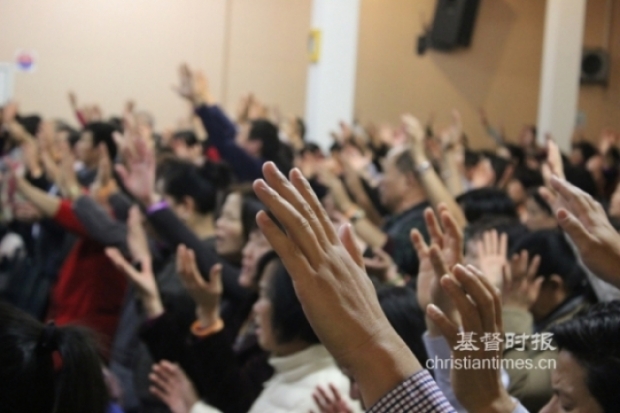Recently, a young pastor who telephoned me to talk about the impact of the outbreak expressed his concern and anxiety.
Since the outbreak began during the Spring Festival, his church has ceased on-site gatherings and moved its services on the Web so they do not cause possible infections in public. However, because the congregation is dominated by middle-aged and elderly believers, the majority do not have sufficient knowledge on how to use the currently popular live-streaming technology. Some are also resistant to watching live webcasts. Moreover, believers who are migrant workers and returned home for the traditional holiday cannot come back to resume work now. These obstacles have resulted in a significant reduction in the number of persons attending worship. In some cases, the number of people attending online worship is even less than one-tenth that of the usual number.
Yet the decline in the number of believers is not the most worrying issue for the young pastor. What he worries about is that although the outbreak is effectively controlled in China, massive on-site gatherings will not be resumed in a short time. In addition to the international outbreak, it is estimated to be a long time before the resumption of on-site gatherings will be allowed. Believers can't have on-site gatherings but must rely on media solely. So their sense of belonging to the church will fade away over time and if this situation continues for more than a year, the church may revert to a form where everything will have to be constructed from the ground up.
While the consequences of these crises can be serious, it will take time for them to develop. The more immediate crisis is the church's financial situation. The outbreak prevents believers from having on-site gatherings and the online services are a poor substitute. At the same time, the economic downturn led by delaying the resumption of production has a direct impact on financial donations from believers.
For middle-aged and elderly believers who are accustomed to traditional services and who are so used to putting their cash envelopes into a donation box, the inability to reach the church venue means no donation. Because they are not familiar with WeChat Transfers (a function of money transfer on WeChat) and some are not unable to access services on the Web, that will greatly affect the church's income. Furthermore, the shrinking wages caused by the economic downturn will make the church's finances tighter and they may even run deficits. The church of the pastor who called me has begun using its savings to pay for rent and other expenses. The church's reserves will soon be exhausted and there is no information on when on-site gatherings will resume.
The pastor's church is no exception to the current general situation among churches nationwide. Regardless of the background of the denomination or the type of church, as long as believers are unable to practice in the traditional way, they will be exposed to the resulting negative crisis.
The economic crisis brought about by the outbreak is testing the Chinese church. Both the official churches and the family churches are suffering from the negative effects of the outbreak. The structure of the church and its organizational style are being reshuffled.
Looking at the demographics of Chinese Christians, we can see why Chinese Christianity is experiencing this particular type of crisis and being reshuffled in this outbreak. According to the 2010 Blue Book of Religion, the elderly account for more than 55% of the members in urban churches; in terms of education, 54.6% are below primary school while those with a junior secondary education account for 32.7 %, a total of 87.3%. Although this is a statistic for official churches, it also reflects the state of the family churches. A decade has passed, but the demographic situation of Chinese Christians has not improved.
As for believers, they are mainly from rural areas whereas in urban churches the working-class accounts for a large proportion. Urban local churches make up only a small percentage. In terms of the age structure and educational level as well as the geographical distribution of the believers, the hardship that this outbreak has caused the Church is a common phenomenon.
This common hardship that the church faces has become the norm over time and could lead to the disintegration and collapse of churches under economic pressures. In business terms, the change in communication brought about by the outbreak will inevitably lead to the bankruptcy and reorganization of traditional churches. For churches that rely on the donation of believers, the reduction in or lack of giving is bound to weigh on the church's leaders. This is also a test for the church's core leadership.
It is foreseeable that the churches' rent defaults due to the financial crisis will continue to increase or become commonplace. This is a serious blow to the legacy of the traditional churches' recent pursuit of a large-scale and flamboyant development model. It is also a heavy debt for churches that have built ornate venues and rented office buildings to present a successful image compounded by a decline in the donation of believers.
Another negative social consequence if churches default on their debt is that they must pay a heavy price for the negative social image generated from defaulting.
Once the outbreak lasts for more than a year, the sense of belonging of believers will be greatly diminished. Even if optimistic estimates that international outbreaks can be effectively controlled by the end of this year are realized, and domestic public gatherings are resumed, the awareness of and commitment to church after a year of no gatherings will cause a significant drift. This will allow believers to select another church, which is undoubtedly a test for many churches. This is the result of the traditional authoritarian church system. Over-emphasis on the authority of the preacher or the divine pastor downplays the role of the group and the individual. This leads to individuals not taking responsibility for the church community. In their view, it is the responsibility of the church leader and pastor, which is a consequence of the preachers' sense of their own righteousness.
A church's financial recovery is different from that of a business. A plant that has a two-month shutdown is not short of workers and the market for the products it produces still exists. When production resumes, combined with government support, enterprises can soon restore their capacity and survive the crisis. However, once a church loses its believer base, it is almost an impossible mission to restore its membership, regain the trust of people and restore its financial donation level prior to the outbreak. The time needed is much longer than the recovery time of a factory.
So the collapse of the traditional church under the pressure of the pandemic may only be a matter of time and may happen soon. In the face of this crisis, there is no way out so there may be a major reshuffle of churches, an inevitable result of this outbreak.
The result of a reshuffle among traditional Christian churches will be the elimination of churches that have built posh venues and exceeded their financial capacity. The scale-based development model is bound to suffer a major setback. Traditional churches, which are mainly comprised of middle-aged and elderly members who only have a junior-high school education level, will also be affected by the disaster.
Yet, those smaller churches that have built good relationships and where there is a sense of belonging among believers, with moderate social tensions, and a theology focused on social services may show greater vitality.
- Translated by Charlie Li












